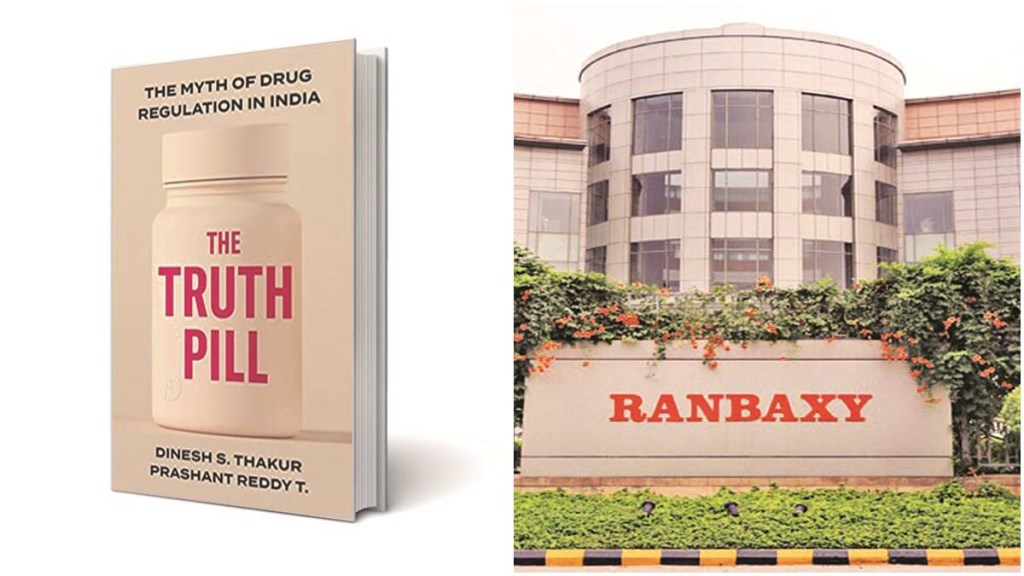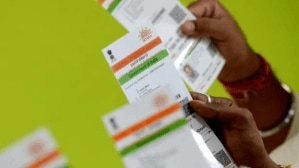By Soma Das
On the surface, it may appear that Dinesh Thakur, the whistle-blower of Ranbaxy Labs who also proved to be the company’s nemesis, and the Indian pharma industry are battling against each other with the book The Truth Pill. At a deeper level, the cause that Thakur has adopted and the mission he is on—to ensure that India’s drug regulatory system comes on a par with the best-in-class regulators globally by upping its game in competence, expertise, and transparency—is fundamental to the evolution of the country’s pharmaceutical industry in the long run. This upgrade of India’s drug regulation system, that Thakur is so fervently arguing for, is also critical to ensure the health of people in this country and several other countries across the world where India-made drugs strive to save lives.
No drug regulator was born perfect. In a brief global history of drug regulation, authors show how tragedies and scandals have been pre-cursor to reform in the space. It took a series of disasters caused by contaminated and compromised drugs between 1901-1960s for the US and most European countries to institutionalise mechanisms that can ensure safe and effective drugs in these markets.
Also Read: Book Review: A reform journey well traversed
Thakur writes “…much of the drug regulatory law has been written with the blood of citizens…many of them children”. Opening his book with five episodes of DEG poisoning in India between 1972 and 2019 which led to mass deaths, including of children, after they had consumed cough syrups adulterated with a chemical solvent used in brake fluid, Thakur exhorts the government to create a regulatory ecosystem where such bone-chilling incidents become the rarest exceptions instead of preventable blunders. Through the book, authors implore the state to become the guarantor of safety and efficacy of drugs, not leaving the task to pharma companies alone.
Citing a series of court cases, Thakur’s account shows how lightly the Indian judiciary takes cases of manufacturing substandard drugs. Not only are the conviction rates low, drug-makers often choose to plead guilty in these cases. It’s an easy route as they are often left scot-free after a few hours of symbolic ‘imprisonment’ along with a peanut-penalty amount of a few thousand rupees. Judges often have limited understanding of how adversely a sub-standard drug can affect patients. For instance, in a case where the drug was found to contain only 13% of Azithromycin the label had claimed, the judge concluded that “at-most… patient… wouldn’t have received immediate relief”, ignoring the fact that for patients with a life-threatening infection this could even result in death.
Also Read: Eye on the goal: The book review on Ranjay Gulati’s ‘Deep Purpose’
Such flawed understanding leads judges to succumb to ‘soft justice syndrome’ while dealing with cases of substandard drugs. Drug-makers also find refuge in the compromised conditions of the supply chain, and not unreasonably so. Even as drugs in the market are regulated, their transport is not. In a hot and humid country like India, drugs, unless transported in the right conditions, can degrade fast. Besides making a case to regulate drugs in transit, authors suggest important measures to make drug inspections frequent, effective and their reports accessible to the public for scrutiny.
There is a reason why the Indian media only reports on pharma companies recalling drugs from the US, not India. The reason is not that drugs in India are safer. After over four decades of ‘epic bureaucratic procrastination’ the government is yet to put in place a robust drug recall system, where the state takes the responsibility of monitoring that drugs once found faulty are recalled back. Similar decades-long delays plagued decisions on banning irrational combination drugs, a unique Indian feature, where manufacturers have been combining and selling two or more drugs without testing their safety. Using insiders’ accounts Thakur alleges that most state drug regulators aren’t inspecting drug-making facilities for good manufacturing practices (GMPs).
Policy deliberations around combo-drugs and ensuring GMPs are essentially reduced to choices between health of small-scale enterprises and health of people. The authors ask a fundamental question—why the US drug regulator can ensure the quality of drugs in their market while the Indian drug regulator cannot make that claim, given doctors in India still prefer one brand over another citing quality concerns. Part of the authors’ answer to that is the scientific studies (called bioequivalence) that establish how closely a generic drug resembles its innovator version (from which it has been copied) in terms of how they dissolve in the human system have been mandated too late and enforced too little here. Second, stability tests that ensure that drugs do not degrade through their life-cycle also get poorly implemented here.
The moot point here is that when the rule of law and its enforcement is weak, scope and incentives to falsify documents and cut corners with impunity is much more. At the end, authors make a case for a stronger regulator with teeth and transparency at every stage, an argument hard to refute.
Thakur and Reddy have painstakingly drawn rich elements from a mix of judicial, executive, legislative, and media documents to weave artfully the first of its kind cogent big-picture public policy history of drug regulation which is extremely valuable, and a must read for anyone remotely interested in the pharma sector—be it government officials, industry stakeholders, students or journalists. There are a hundred stories and a thousand leads packed in that book waiting to be discovered and reported about including a missing report of the expert committee headed by Dr Tribhuvan Mohan Mohapatra on the state of drug regulation which has explicitly named three former drug controller generals of India for messed up new drug approvals.
The narration, however, doesn’t come without its own biases and flaws. In such a comprehensive book on drug regulation, one misses reading about the hugely underwhelmed pharmacovigilance system, a science to monitor side effects of drugs. It is not only essential to improve the science of medicine but also a crucial way to ensure engagement of citizens in a subject perceived as too technical, and too rarefied for public participation.
At times, one also wonders whether the book uses bad apples to generalise about the orchard. At times, one can’t stop asking the authors—would the world be a better place without Indian generics, that have ensured access of drugs to millions of people around the world, mostly in places which cannot afford rich-world prices? Why despite such in-depth research and analytical skills, the authors have not even once acknowledged the critical role Indian drugs have played in the global pharma history? After all, a reform agenda, which the book is in spirit, doesn’t necessarily need to read like a chargesheet.
Its singular focus on quality at times makes the book divorced from socio-economic realities of a country, where many poor households spend their entire incomes on medicines and healthcare and get pushed into extreme poverty. Not that they do not deserve drugs of quality, but their daily struggle for survival makes it a luxury for them to seek assurance of qualities.
That’s one reason why informed and articulate voices like Thakur’s must be heard seriously despite the reputational damage to the Indian pharma industry. Thakur remains the stubborn crusader he has been since his Ranbaxy days, only his horizon has expanded from a company to a country; and one wishes that he applies his attention next to regulations of hospitals in India. With this book, Thakur’s journey from a whistle-blower to warrior is complete. Not that the two are mutually exclusive. What is a whistle-blower if not a warrior in hiding!
Despite missing the truth that the truth can seldom be packed in a pill, The Truth Pill will remain an important chequered tile in the complex mosaic of the Indian pharma history. A reminder of weak spots, but a springboard for progress.
Soma Das is the author of The Reluctant Billionaire and an adviser to multiple agencies in the development space
THE TRUTH PILL: The Myth of Drug Regulation in India
Dinesh Singh Thakur & Prashant Reddy Thikkavarapu
Simon & Schuster
Pp 512, Rs 899








